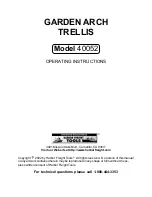
92
SCAN-LAN VI
The actual length of a pair is longer than the length of the cable but the
NVP is calibrated to give the length of the cable.
A default threshold value of 7% was chosen for the SCAN-LAN VI. This
value corresponds to the worst-case allowable impedance discontinuity
specified in IEEE 802.3 for coaxial cable. See
Chapter 9, Setup
, for
information on how to change the default threshold value. If you do not
want to see anomalies in your test results, increase the fault threshold
value.
The SCAN-LAN VI also detects impedance anomalies as part of the Length
test. An anomaly is an impedance mismatch along the cable; however, an
open or a short is considered the end of the cable, not an anomaly.
An anomaly can be caused by a number of conditions, including a cable
mismatch, a cut in the cable, a defect in the cable, a kink in the cable, or
a poor connection. When the SCAN-LAN VI sends out a TDR pulse, the
severity of the change of impedance determines how much of the signal
is reflected back. The Fault Threshold setting in the SCAN-LAN VI
determines the minimum reflected signal that will be detected as an
anomaly.
Typically, twisted-pair specifications do not address impedance anomalies.
This is primarily because when an application uses twisted pair, there is a
separate transmit pair and receive pair.
Anomalies are more important to consider when the same wire is used
for both transmit and receive (for example, coax cable).
The table on the next page describes some common length problems
and solutions.
Summary of Contents for SCAN-LAN VI
Page 2: ......
















































